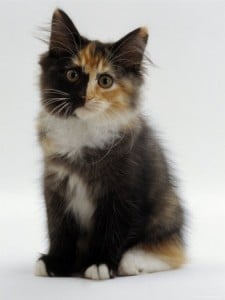Pet Advice Guides for Pet Owners
Posh Cats – are pedigrees best?
There’s no doubt that pedigree cats are beautiful but they are also expensive and can take a lot more looking after than your average moggie. Do they make the best pets? And if you’ve set your heart on a purebred pusscat, which breed is for you?
There are over 100 different cat breeds in existence today and they all have different characteristics. Pedigree cats haven’t just appeared on the scene, they have been selectively bred to get the appearance and traits the breeders desired. There was a time in England, during the Middle Ages, when cats were feared and people killed them. It was thought they were associated with witchcraft – they were blamed for everything that went wrong. After the Great Plague when hundreds of thousands of people died, it was suddenly realised that the increase in the rat population was because the cats, as a species, had almost been exterminated. Now everyone wanted the cats to come back and deal with the rodents! Cats have been popular ever since. Mostly they were working partners with humans. Since the mid 19th century however, the cat began to be seen as a beautiful and interesting animal. The first cat show was held in 1871 at the Crystal Palace in London and pedigree cats had arrived.
If you’re not sure whether to go for a pedigree or take your chance with what’s on offer elsewhere, the main consideration is that once you’ve decided on a particular breed, you know that you will be able to get just what you are looking for from a breeder. Make sure that you see at least one of the parents, and some siblings if possible. Some pedigree cats are neurotic and this is a result of the inbreeding that’s been necessary to ‘fix’ the breed characteristics. Cats from a reputable and knowledgeable breeder will have good placid temperaments and healthy constitutions. If ‘beauty’ is to share your home and lifestyle, this lovely creature has to be manageable and good natured too.
There are some superb ‘ordinary’ cats with lovely and unusual colourways to be found in almost every part of the country. You might have to search many animal shelters and answer a lot of newspaper ads before you find just what you are looking for though. We have beautiful kittens here, some with fabulous coats and colours; we’ve had green and orange eyes but never blue or odd coloured – so far anyway. Who knows what this year’s kittens will be like? They are all lovely but some of last year’s were real ‘chocolate box’ superstars!
Hy-brid vigour – Pure bred cats have been selectively bred for generations and the kitten you are offered, complete with pedigree, is the result of human selection. Left to themselves, all cats would be moggies! Within the cross breed cats there are many superb examples – stunning variations and types. Others might be a bit plainer but there is a lot to be said for hybrid vigour. Cats that are an outcross with someone completely unrelated will most probably be strong and resourceful individuals. They often have the nicest personalities too.
Long Haired cats – Persians are probably the most popular breed but they are high maintenance cats and need grooming daily. Breeders like to call them Longhairs although they are all descendants of cats imported from Persia or Turkey in the 16th and 17th century. It’s believed that there weren’t any longhaired cats in Europe before then. There are many different types of longhairs and they are classified according to colour, so it’s a personal choice. Some have blue or orange eyes and there are even odd-eyes – I think they are especially beautiful. If you are thinking of a blue eyed white, make sure it isn’t deaf – they often are. These colour mutations are the result of interbreeding. These longhaired cats are normally placid and have charming and affectionate natures. They do need a lot more care than most other breeds but are well worth it. There are seemingly endless colour variations, red, black, cameos, cream and smoke. It’s your choice.
British Shorthair – began life as a street urchin but was recognised as a breed at the end of the 19th century. This is a lovely cat, friendly, affectionate and a good mouser. He’s an even tempered easy going cat who is very intelligent, because of his street-wise ancestry no doubt. The fur nowadays is quite distinctive, short and dense and there are lots of colourways. The blue – cream is especially attractive and these cats have been specially bred to have coloured eyes. This is a chunky cat with big round eyes and is very lovable. Again, the eyes are sometimes odd coloured. I’ve met lots of these cats when they’ve come to stay with us and they have all had playful and distinctive characters, they’ve been easy going, good eaters and absolutely charming. All these lovely colour combinations and characteristics are the result of selection on the part of the breeders, they’ve deliberately bred a cat to have this type of appearance. Do you like the British Shorthair? I think it would be impossible to say no.
(coming next – Ragdolls and the Manx tail less cat)

